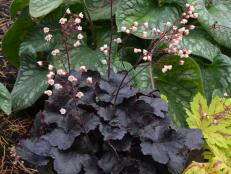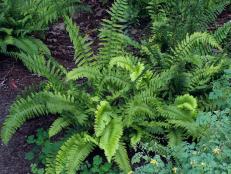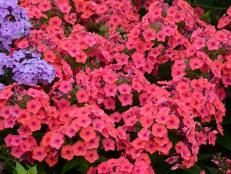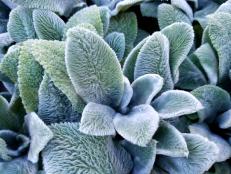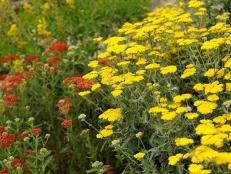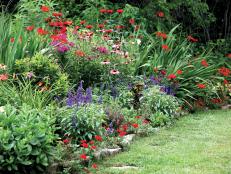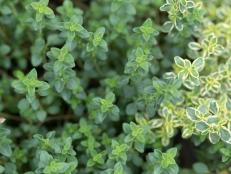Perennial Stars

Siberian Iris
Paul's first challenge is to fill a large bare spot where soil doesn't drain well. To fill the void, he chooses a Siberian iris, a perennial that thrives in moist conditions. Hardy to USDA Zone 3, its foliage is more slender and its flowers smaller than the more common Dutch iris.
The variety he selects is 'Caesar's Brother'; deep purplish-blue flowers bloom in late spring to early summer. After the flowers fade, the foliage looks good until the first hard frost. If planted about 18 inches apart, they'll knit together in about three years. The Siberian iris is resistant to the iris borer.
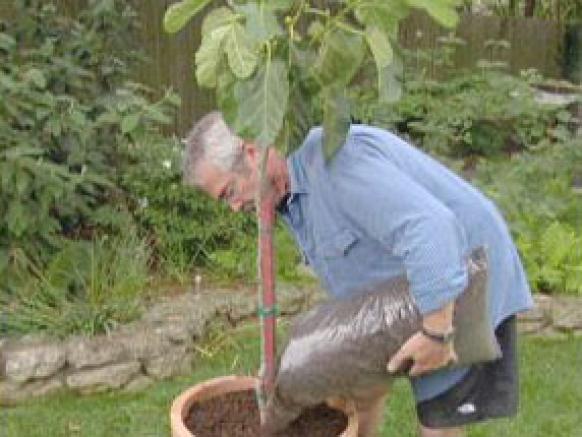
'Peter's Honey' Fig
A fan of figs, Paul next plants a small fig tree, 'Peter's Honey.' Because the tree is only marginally hardy in his climate, he pots it in a container. "If temperatures drop below 10 degrees or so," he says, "I can move it into the garage for safe keeping."
Since 'Peter's Honey' is a self-pollinating fig tree, Paul plants only one. Figs need full sun and a fair amount of room to grow because they'll slowly reach a height of 15 to 25 feet tall with a nearly equal spread. Fig trees aren't bothered much by disease or pests, but birds will strip a fig tree of ripe fruit; Paul suggests putting bird netting over the tree once the fruit starts to ripen.

'Twisty Baby' Black Locust
The curvaceous 'Twisty Baby,' a variety of dwarf black locust, grows up to 15 feet wide and tall. Since this large shrub or tree suckers (produces secondary shoots from the base or roots that can form new plants), James plants it in a container. "I'll also prune it once a year to keep its growth in check and to encourage more contorted branches."

'Jack Frost'
Paul brightens the shady areas of his garden next, first planting Brunnera 'Jack Frost.' Brunnera is a perennial that grows well in shade and produces sky-blue flowers. This particular variety is hardy to -25 degrees and its silvery foliage can grow to 10 inches in height and width. It flourishes in moist, rich, well-drained soil with a good deal of shade, or even a few hours of sun if in the northern U.S.

'Bressingham Spire' Monkshood
Another great plant for shade, monkshood produces gorgeous blue flowers. 'Bressingham Spire,' a bit stockier version of the species, can grow up to 24 inches if planted in cool, fertile soil with plenty of moisture.

Japanese Spurge
A variegated form of pachysandra, Japanese spurge is an unusual ground cover that grows well where few others will — beneath the shade of mature trees. Its silvery-white leaf margins also brighten up otherwise dark, shady areas.

Carnation of India
For a tropical feel Paul adds the carnation of India, a real beauty with green glossy leaves and white ruffled flowers.

'Black Scallop' Bugleweed
A member of the ajuga family, 'Black Scallop' has chocolate-colored foliage, grows to only 4 inches tall, and is hardy to Zone 3. Can be invasive.







